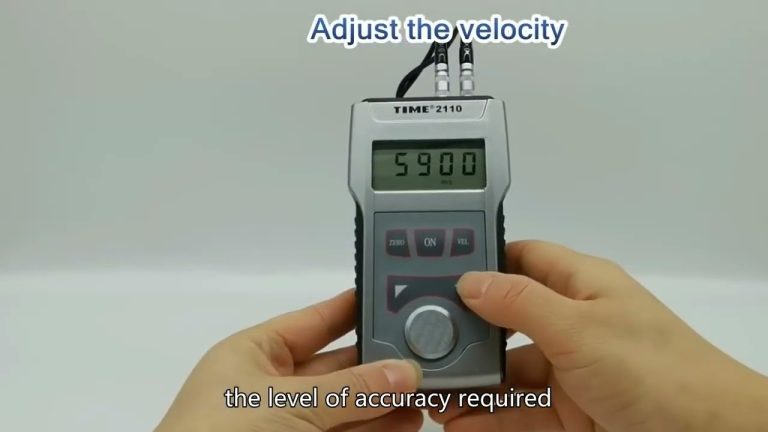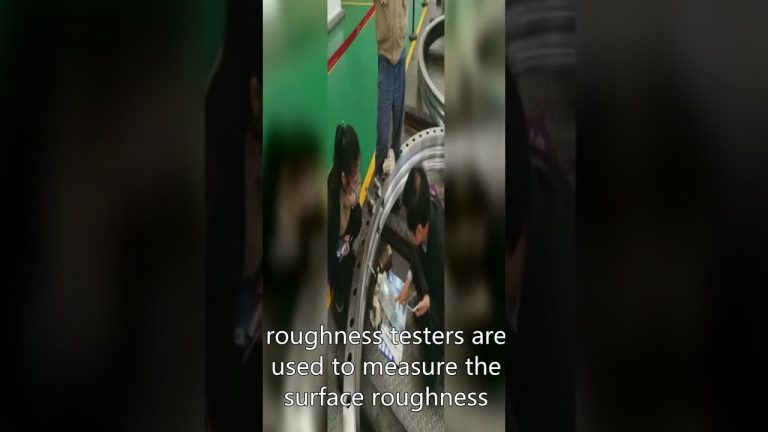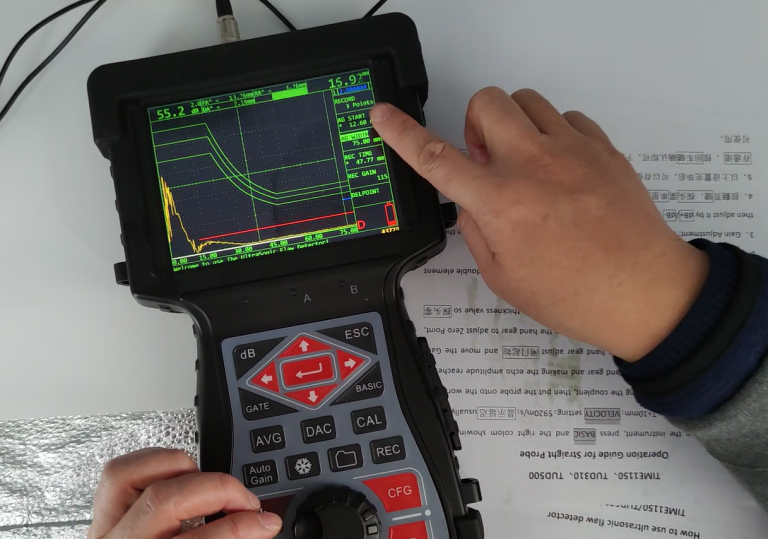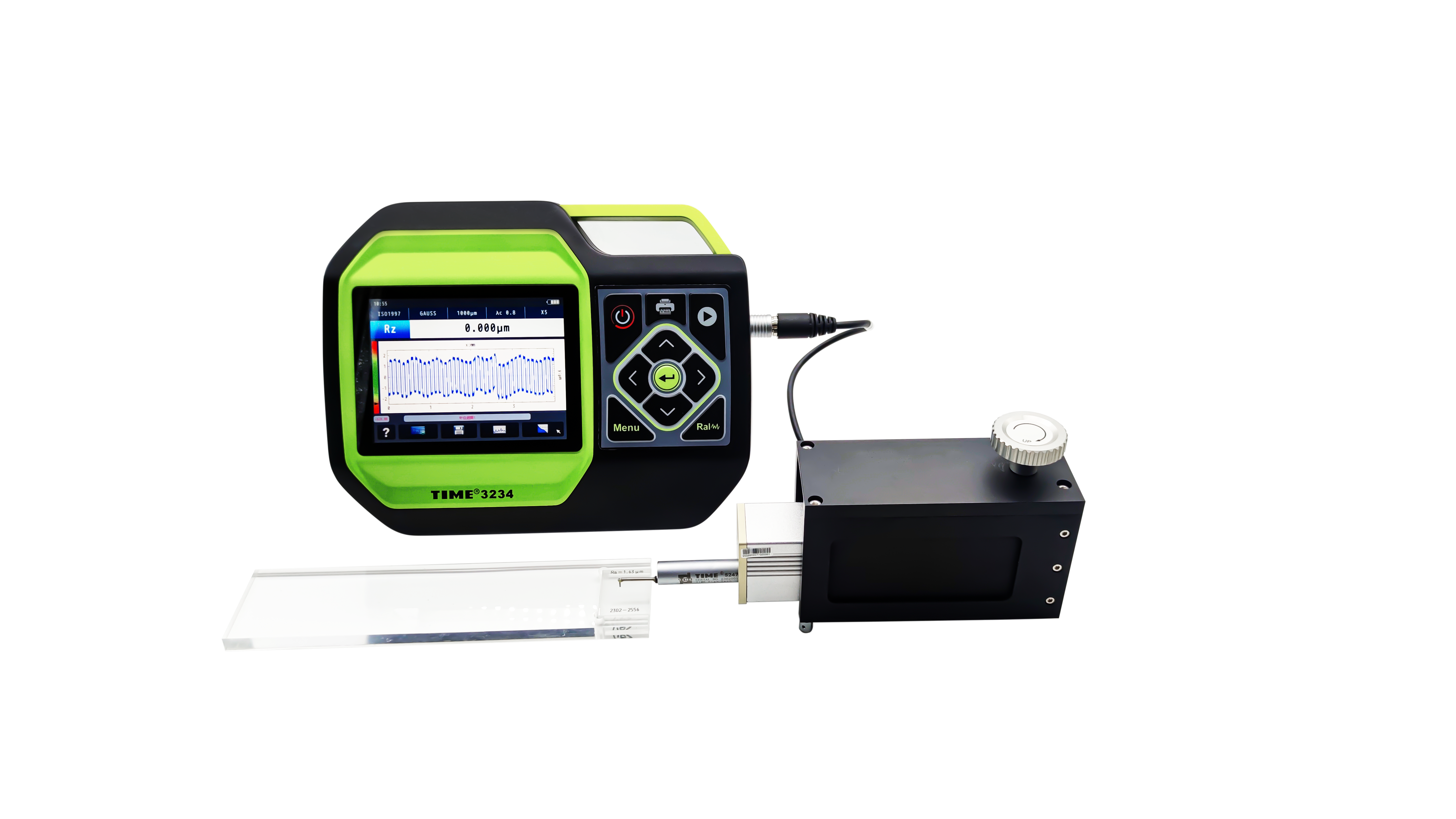The rebound method has been used in my country for more than 40 years to test the compressive strength of concrete. It is favored by engineering inspection personnel because of its simplicity, flexibility, accuracy, reliability, speed and economy. It is the most widely used method in engineering inspection in my country.
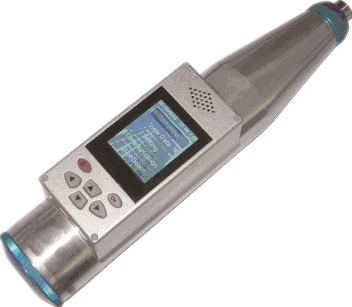
One of the most extensive testing instruments. When there is doubt about the quality of the engineering structure, the rebound method can be used for testing. However, during the use of the rebound method, there are still many problems such as irregular operation, arbitrariness, and inappropriate calculation methods, resulting in large test errors.
How to ensure detection accuracy so that it can play its due role in supervising and inspecting structural engineering and concrete quality has become a topic of concern to many project builders. To improve the detection accuracy of the rebound method, the following factors should be comprehensively considered.
- Pay attention to the applicable conditions for rebound test
The rebound method is a method that uses a rebound meter to detect the surface hardness of concrete to calculate the strength of the concrete. When there is an insufficient number of standard curing specimens or the specimens are not made according to regulations; there is doubt about the concrete strength of the component; or the inspection of the specimens If the results are in doubt, the test can be carried out according to the “Technical Regulations for Testing the Compressive Strength of Concrete by Rebound Method” (JGJPT2322001) (hereinafter referred to as the “Regulations”). It must be noted that the prerequisite for the use of the rebound method is that the internal and external quality of the concrete to be tested is basically consistent. When there is a significant difference between the surface layer and the internal quality of the concrete, such as suffering from chemical corrosion, fire, frostbite, or internal defects, rebound cannot be used directly. method to test the strength of concrete. - A calibration test of the rebound hammer must be carried out before testing. The quality and testing performance of the rebound hammer directly affect the accuracy of the estimation of concrete strength. Only a rebound hammer with good performance can ensure the reliability of the test results. The standard state of the rebound hammer should be on a standard steel anvil with a Rockwell hardness HRC of 60 ±2. After three vertical bounces downwards, the average rate setting should be 80 ±2. Otherwise, the hammer hammer must be adjusted or calibrated. test. In the inspection of a single component, it is generally only necessary to calibrate it before testing. However, in large-scale inspection, due to the influence of factors such as on-site dust and the stability of the rebound hammer itself, as the working time increases, the rebound will decrease. The working status of the instrument gradually drops below the standard status. Sometimes there is a large difference in the rebound hammer rate settings before and after a batch inspection item is tested, resulting in low test results. Therefore, when testing in large quantities, standard steel anvils should be carried with them so that they can be calibrated and replaced at any time to ensure the accuracy of the test results.
- The measurement area must be selected correctly
When arranging the measurement area for testing components, the distance between two adjacent measurement areas should be controlled within 2 m. The distance between the measurement area and the end of the component or the edge of the construction joint should not be greater than 0.5 m and not less than 0.2 m; the measurement area should be Choose to have the rebound hammer in the horizontal direction to detect the concrete pouring surface, and choose it on two symmetrical measurable surfaces. If this requirement cannot be met, you can also choose it on one measurable surface, but it must be evenly distributed. Measuring areas must be arranged in important parts and weak parts of components, and embedded parts should be avoided. When encountering small thin-walled components, it is not advisable to arrange the measuring area, because the vibration generated by the thin-walled component when struck will cause the loss of rebound energy and make the detection results low. If testing is necessary, it should be reliably supported so that it has sufficient binding force before testing. - Testing actions must be standardized and avoid random operations.
The rebound method itself is a scientific operation method, and the country has also specially formulated corresponding regulations, which does not allow operators to operate at will. The accuracy of rebound also depends on whether the operator’s force is appropriate and uniform, whether it is perpendicular to the surface of the structure or component, and whether the operation is standardized. However, in actual testing, few people carry out testing operations in strict accordance with the technical requirements stipulated in the standards. They have a weak sense of responsibility and are perfunctory. Such testing will bring large testing errors and cannot guarantee the rebound quality. For this reason, we should Strengthening the professional ethics of inspection personnel and improving inspection responsibility are the only ways to truly improve the inspection accuracy of the rebound method. - Eliminate the influence of test surface factors
The “Regulations” stipulate that the surface of concrete components used for rebound testing should be clean and smooth, and should not have loose layers, laitance, grease, honeycombs, or pitted surfaces. We often encounter components with pitted surfaces or laitance during inspection. They must be smoothed with a grinding wheel before springing back, otherwise the results will be low. On the premise that the test surface is clean and flat, it is also necessary to pay attention to whether the surface of the concrete is dry. The moisture content of the concrete will affect its surface hardness. After the concrete is soaked in water, its surface hardness will decrease. Therefore, the humidity on the concrete surface has a great influence on the rebound test. For wet or water-soaked concrete, the surface must be dried before testing. It is recommended to use natural drying method. It is prohibited to use hot fire or power supply for forced drying to prevent the concrete surface from being burned and affecting the detection accuracy. - Pay attention to the test value of carbonization depth.
The accuracy of the measurement of carbonation depth value, like the rebound value, directly affects the accuracy of estimating the strength of concrete. When testing the carbonization depth, note that the depth value should be the vertical distance, not the non-vertical distance present in the hole. The powder and debris in the hole must be cleared before measurement, otherwise it will be difficult to distinguish between carbonized and uncarbonized boundaries, resulting in large test errors. When measuring the carbonization depth value, it is best to use special measuring instruments instead of visual inspection. There is another situation that should be paid special attention to. When testing the carbonization depth of components covered with stucco mortar, the test surface is affected by the filling and penetration of cement mortar, and its surface layer has a high alkali content. The phenolphthalein alcohol solution used for the carbonization test encounters The alkali turns red immediately, which can easily cause visual errors, thinking that the carbonization depth value is very small. If you carefully observe the test hole, you can find that the color of the outer layer is darker, but the color of the concrete inside the hole is lighter. The thickness of the lighter color part is the actual carbonization depth of the concrete. Inspectors must pay attention to distinguish this subtle difference. - Pay attention to the correction of concrete rebound value
In recent years, with the popularization of pumped concrete in cities, the temperature value of the concrete in the measurement area estimated by the rebound method according to the concrete strength conversion value table in the measurement area will be significantly lower than its actual strength value. This is because the pumped concrete has high fluidity, the particle size of the coarse aggregate is small, the sand rate increases, the mortar coating layer of the concrete is thicker, and the surface hardness is low. Therefore, when using the rebound method to test the strength of concrete, it is necessary to understand the method of pouring concrete by the construction unit in advance and pay attention to corrections. In addition, when the rebound meter is in a non-horizontal direction during testing and the test surface is a non-concrete side, the rebound value must be corrected first according to the rebound value during the non-horizontal state inspection, and then different pouring operations must be performed according to the angle-corrected rebound value. The rebound value of the surface should be corrected. The order of such corrections cannot be reversed, nor can the separately corrected values be directly added to or subtracted from the original values, otherwise it will cause calculation errors and affect the estimation of concrete strength. - When the test is abnormal, it needs to be used in conjunction with the core drilling method. In current engineering construction, large formwork with plywood surface is commonly used. This type of formwork has excellent sealing performance but is not air-permeable. The bubbles generated during the vibration process gather on the surface of the concrete and the large surface. It is difficult to discharge between the formwork, resulting in a large number of tiny pores on the concrete surface after the formwork is removed, making the concrete surface not very dense. If the concrete curing cannot keep up, the concrete surface will not be able to effectively carry out hydration reaction, and not only will there be pulverization. , and the carbonization depth of concrete is relatively large, resulting in low concrete surface strength. For example, in a commercial and residential building with a frame structure in our city, when a rebound meter was used to randomly inspect the concrete of the three-story shear wall, it was found that the surface strength of the concrete of all sampled components was relatively low, only reaching 67% of the original design strength level. After checking the construction technical data, it was found that there were no problems with the concrete mix ratio and raw materials used in the project. The management of the concrete after mixing by the construction unit was also in place. So the core drilling method was used to take samples for re-inspection. The core sample was observed and the surface layer of the concrete was 10 mm. Loose. The inner layer is relatively hard, and the core sample test result shows that the actual concrete compressive strength is in line with the original design strength level, thus avoiding a misjudgment.
- Establish a special strength measurement curve for this region
Although the national standard provides a strength measurement curve for national universal rebound test and a conversion table for concrete strength values, the national unified curve only takes into account the use of raw materials across the country and does not differentiate between crushed and pebbled ordinary concrete. However, in fact, there is a big difference in the strength of crushed and pebbled ordinary concrete tested by the rebound method. The regional strength measurement curve is a curve established through testing, verification, and correction by fully considering the concrete raw materials, climatic conditions, and molding nutrient and maintenance processes in the region. Compared with the universal strength measurement curve, this curve is better than the universal strength measurement curve. It is closer to the experimental data and can better estimate the actual strength of concrete in the region. Therefore, establishing a special strength measurement curve for this region can effectively improve the detection accuracy of the rebound method.

